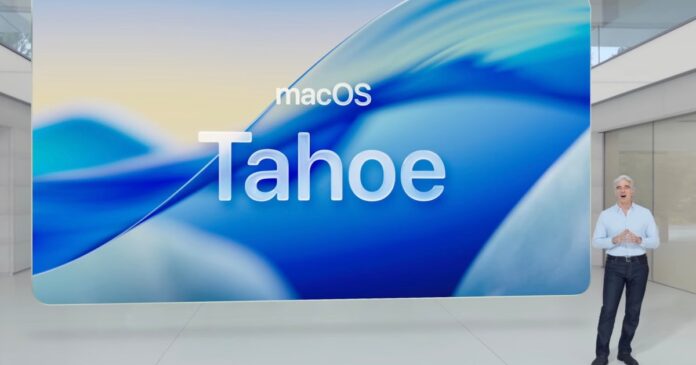Introduction to Apple’s WWDC Event
Apple’s WWDC event kicked off on Monday, revealing the company’s software plans for the year ahead. As with every WWDC keynote, the upcoming shift to new software also signaled diminishing support for older Apple devices.
What’s Changing with macOS 26
Apple’s upcoming macOS 26, also known as macOS Tahoe, will be the final macOS release for Mac computers powered by Intel processors. The tech giant ditched Intel chips in favor of its own custom-designed Apple Silicon chips, starting with the M1 in 2020 before completing the transition in 2023. This change was announced by Matthew Firlik, Apple’s senior director of developer relations, during the WWDC Platforms State of the Union keynote on Monday.
Compatible Devices for macOS Tahoe
Tahoe will actually be compatible with only a few Intel Macs, which came out in 2019 and 2020. The updated operating system will not run on Intel versions of the MacBook Air and Mac mini. Specifically, macOS Tahoe will be compatible with:
- MacBook Air with Apple Silicon (2020 and later)
- MacBook Pro with Apple Silicon (2020 and later)
- MacBook Pro (16‑inch, 2019)
- MacBook Pro (13‑inch, 2020; four Thunderbolt 3 ports)
- iMac (2020 and later)
- Mac mini (2020 and later)
- Mac Studio (2022 and later)
- Mac Pro (2019 and later)
Devices That Won’t Be Compatible with macOS Tahoe
There are Mac machines that support macOS Sequoia (the current macOS version) but won’t be able to get macOS Tahoe, including:
- MacBook Air (Retina, 13-inch, 2020)
- MacBook Pro (13-inch, 2018; four Thunderbolt 3 ports)
- MacBook Pro (15-inch, 2018)
- MacBook Pro (13-inch, 2019; four Thunderbolt 3 ports)
- MacBook Pro (15-inch, 2019)
- MacBook Pro (13-inch, 2019; two Thunderbolt 3 ports)
- MacBook Pro (13-inch, 2020; two Thunderbolt 3 ports)
- iMac (Retina 5K, 27-inch, 2019)
- iMac (Retina 4K, 21.5-inch, 2019)
- iMac Pro (2017)
- Mac mini (2018)
What This Means for Intel Mac Owners
Owners of Intel Macs can still expect to get security updates for their machines for some time to come, but access to new features in macOS 27 — set to launch next year — won’t be possible as compatibility will be limited to Apple Silicon devices.
New Features in macOS Tahoe
Tahoe, which lands for the latest Mac computers this fall, introduces a major redesign featuring a new Liquid Glass translucent aesthetic, enhanced customization options for folders, app icons, and Control Center, a new Phone app for Mac with iPhone call integration, a major update to Spotlight, expanded Apple Intelligence capabilities including Live Translation and intelligent Shortcuts, and improved Continuity experiences to boost productivity and personalization across Mac and iPhone devices.
Conclusion
In conclusion, Apple’s WWDC event has brought significant changes to the company’s software plans, including the end of support for Intel-based Macs with the release of macOS 26. While this may be disappointing for some users, the new features and improvements in macOS Tahoe are exciting and will likely enhance the user experience for those with compatible devices. As Apple continues to push the boundaries of innovation, it’s clear that the company is committed to providing the best possible experience for its users, even if that means phasing out older technology.

